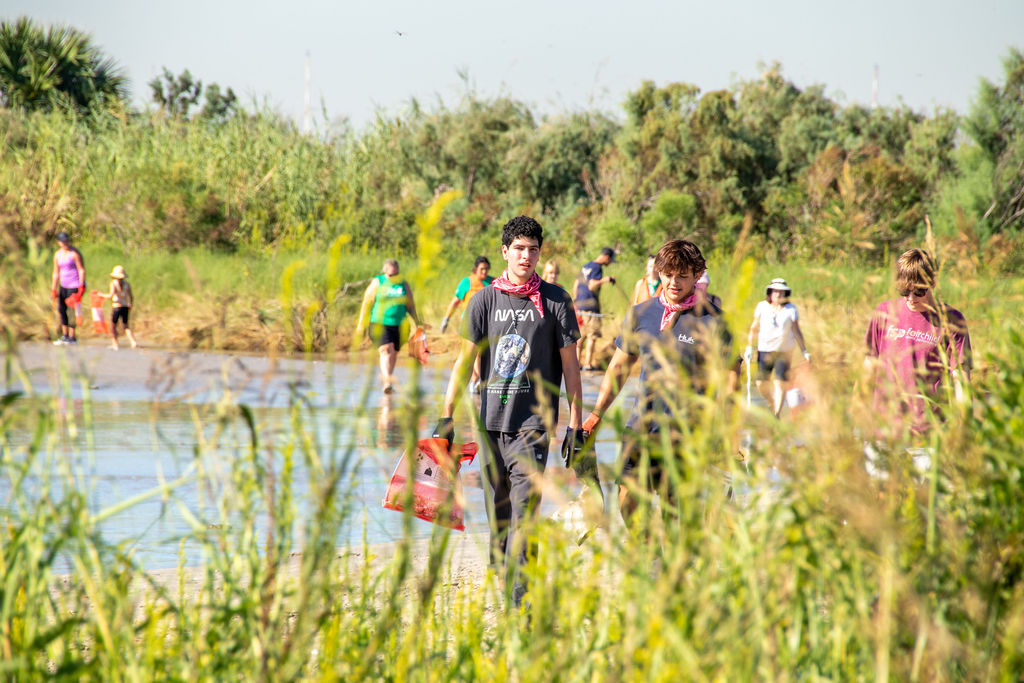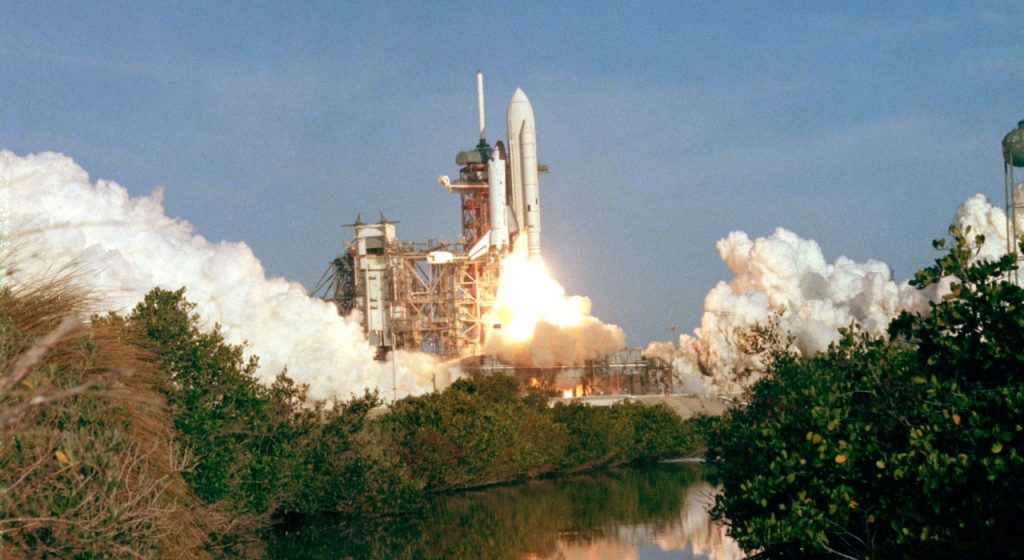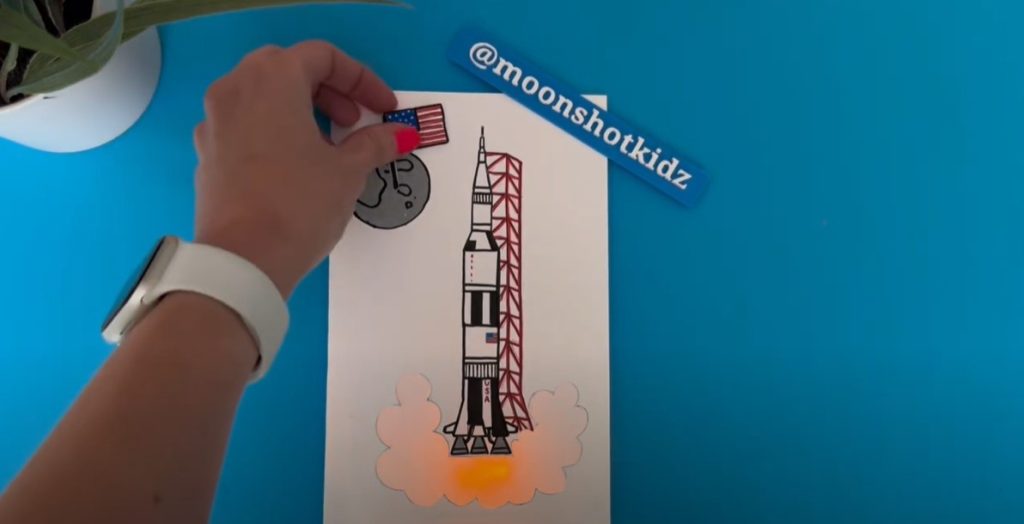
During your next visit, don’t miss our new mural in Zero-G Diner highlighting the past, present and future of space exploration.
The mural, titled Journey to New Horizons, celebrates the spirit of American spaceflight and the visionary engineers, scientists, and astronauts who pioneered a new frontier beyond Earth.
This visual timeline captures some of America’s most influential and iconic achievements in spaceflight from the earliest milestones of launching a rocket to developing a spacecraft that will allow mankind to journey to another planet in the not-too-distant future.
The theme of envisioning the past, present, and future not only applies to the brilliant individuals who have made American spaceflight possible, but also the artists and photographers who have made spaceflight such an iconic and inspirational part of American history.
The mural was made possible by the imaginative talent of artist Blake Dumesnil who created the design using the work of artists Robert McCall, James R. Bassett, Stu Shepherd, as well as Glenco Models, Tamiya Models and NASA’s Imagery Online Database.
Mural highlights:
- A model of Robert Goddard’s rocket
- The Bumper V-2 rocket was the first rocket to be launch from Cape Canaveral in 1950
- A model of America’s first satellite, Explorer I
- Above the Mercury Atlas rocket, there is a gold star memorializing Astronaut Theodore Freeman
- President John F. Kennedy is highlighted giving his famous speech at Rice University on Sept. 12, 1962
- Above the photo of John F. Kennedy is an image of early construction being done on building the Manned Spacecraft Center in Houston, later to be renamed NASA Johnson Space Center (JSC)
- Above the photo of JSC construction, the Mariner 4 spacecraft is featured for it being the first spacecraft to do a fly-by of Mars
- Above the Mariner 4 spacecraft, there are two gold stars memorializing Astronauts Elliot See and Charles Bassett
- Between the Gemini and Apollo program imagery, there is a trio of gold stars memorializing the Apollo 1 crew of Gus Grissom, Ed White, and Roger Chaffee
- Above the curvature of the lunar surface, there are two separate gold stars memorializing Astronauts Cliff Williams and Robert Henry Lawrence Jr., the first African-American astronaut inducted into the Astronaut Corps
- Representing the first and last missions to land on the Moon, Buzz Aldrin and Neil Armstrong (as seen in the visor reflection) are featured prominently while Gene Cernan and the Apollo 17 Lunar Module is to the left.
- Above Skylab, the Galileo spacecraft is highlighted as the first spacecraft to fly-by Jupiter
- To the lower right of the Apollo-Soyuz spacecraft, the first international handshake in space between the U.S. and Russia is highlighted as a stepping stone to the international partnership that led to the Shuttle-Mir and ISS Programs
- NASA’s shuttle carrier aircraft 905 is highlighted for its role in the Space Shuttle approach and landing tests
- Above NASA 905, the Voyager spacecraft program is highlighted for its journey through our solar system and into interstellar space
- Sally Ride is featured as the first American female in space
- Mae Jemison is featured as the first African-American female in space
- Above the Space Shuttle blueprints to the right of Sally Ride, there are seven gold stars memorializing the Space Shuttle Challenger crew lost In 1986
- The imagery above the Hubble Space Telescope is actual photos taken by the telescope
- To the right of the Hubble imagery, there are seven gold stars memorializing the Space Shuttle Columbia crew lost in 2003
- Watermarked around the left curvature of the Earth is imagery showing the construction of the International Space Station
- Below the large Space Shuttle orbiting the Earth, the image of the Space Shuttle landing at nighttime is the final landing of Space Shuttle Atlantis, officially ending the Shuttle Program on July 21, 2011
- Around the right side of the Earth’s curvature, NASA’s new Commercial Crew and Cargo Program is highlighted by the following vehicles: Northrop Grumman Cygnus, Boeing Starliner, Sierra Nevada Dreamchaser, SpaceX Dragon
- The spacecraft above the Commercial Partner vehicles is a concept for the Deep Space Gateway with NASA’s Orion spacecraft docked
- Above and to the right of the Deep Space Gateway is NASA’s next-generation space telescope, the James Webb Space Telescope
- In the upper right corner of the mural, SpaceX’s Falcon Heavy rocket is featured along with imagery of its reusable boosters successfully landing back on Earth
- In the lower right corner of the mural, NASA’s Curiosity Mars Rover is featured as the most prominent of NASA’s many probes and rovers that have explored the planet over the years






